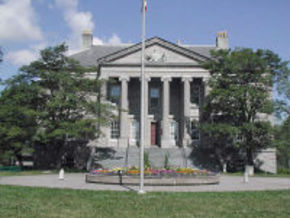

NewFoundland Travel Guide
Newfoundland Travel: General Information
Look at the map of Newfoundland and Labrador and you will exactly know what makes it one of the world’s tourist hot-spots! Newfoundland’s 29000 km of craggy coastline punctuated by numerous bays and fjords unfurl a world of immense natural beauty before you. Shift your gaze a little inland, the mesmerizing beauty of the rolling hills and mountains with their forested valleys and meandering rivers leave you dumb-founded. But if you are under the impression that natural beauty is what Newfoundland and Labrador travel is all about, then know the fact that there is much more to egg you on – there is ancient topography for you to view as in the UNESCO World Heritage-listed Gros Morne National Park, there are indigenous communities scattered here and there, there is historical-connect of the arrival of the Europeans, there is Newfoundland’s distinctive flora and fauna and a whole range of adventure sports and activities. The state’s palatable cuisine is an added charm of Newfoundland travel.
Newfoundland Travel: Key Facts
Capital City: St. John’s
Area: 405,212 sq km
Population: 508,726
Monetary Unit: CAD
Official Language: English
International Dialing Code: 001
Newfoundland Travel: Popular Tourist Destinations
St. John’s: St. John’s, the provincial capital, boasts of a rich history being the oldest North American city founded by the English. Signal Hill (with the Cabot Tower) is a must visit, not only because it is a Canadian National Historic Site but also because it gives a good view of the city. The other point of interest in St. John’s is The Rooms cultural complex – a grand structure that houses the Provincial Museum of Newfoundland and Labrador, the Provincial Archives of Newfoundland and Labrador and the Art Gallery of Newfoundland and Labrador. St. John’s other attractions include St. John’s Basilica and St. John’s Cathedral, its urban parks and sporting arenas. St. John’s has a rich musical culture and is a perfect outing for night owls with its hip bars, clubs and restaurants. In addition, if you are planning some shopping, visit Water Street, which is one of the oldest shopping areas of North America.
Mount Pearl: Mount Pearl, the third-largest city of the province, developed as a satellite-city/resort area of St. John’s. The city’s attractions include its Community Complexes –The Glacier Arena and The Smallwood Arena – that act as venues for sporting and recreational events, exhibitions, concerts, etc. Mount Pearl is also famous for its community events, Frosty Festival and Christmas at The Glacier.
Corner Brook: Go to the other end of the Newfoundland Island to reach the second-largest city of Corner Brook. People come here attracted by the picturesque beauty of the landscape but the city is also gaining importance as a ski-resort. The surrounding water-bodies also have enough to keep anglers and water-sports’ lovers busy.
Apart from these three main cities, the Newfoundland and Labrador province is just full of places to visit, things to see and do. The Labrador plateau (which is a part of the Canadian mainland) for instance has many abandoned coastal villages belonging to the indigenous people like the Inuit, Innu and the Métis apart from its fishing villages and the Labrador Straits Museum, which has many things from the state’s antiquity on display. Likewise, there are the province’s national parks like the Terra Nova National Park, other geographic/natural regions with their abundant opportunities of things to do like Marble Mountain and the Witless Bay as well as important pre-historic and historic sites.
Newfoundland Travel: Economy and Infrastructure
Newfoundland’s economy is dominated by the services sector and it is varied financial services that make the key contributions. Nevertheless, being rich in a variety of mineral resources like asbestos, gold, oil and natural, Newfoundland also has a robust mining and oil production sector. Other important industries supporting the Canadian economy include fishery, logging, manufacturing and tourism.
Newfoundland has adequate transportation and communication infrastructure in place to support both its industries and tourism. The province’s health services are also commendable. Speaking of energy-production, the province produces enough energy from both conventional and non-conventional sources of energy.
Newfoundland Travel: Culture
Newfoundland’s culture is a mix of its colonial past and its fishing tradition. Since the largest section of the populace has English ancestry followed by Irish, the culture of Newfoundland manifests pronounced influence of these two cultures. The fishing tradition, likewise, manifests best in the food habits of the people, who generally eat a lot of fish-dishes; fishing has also influenced the ways of life of the people of the province. Music is an integral component of Newfoundland culture.
